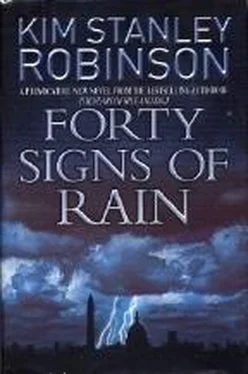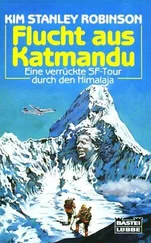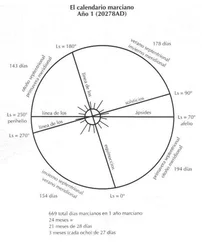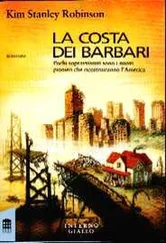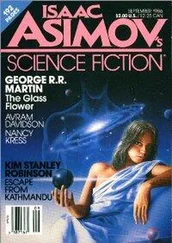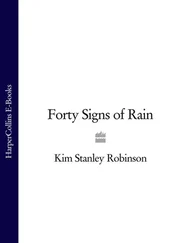Among NSF’s array of departments was an Office of International Science and Engineering, which Anna was impressed to find had managed to garner ten percent of the total NSF budget. It ran an International Biological Program, which sponsored a project called TOGA—“ Tropical Oceans, Global Atmosphere.” TOGA funded study programs, many including an infrastructure-dispersion element, in which the scientific infrastructure built for the work was given to the host institution at the end of the study period.
Anna had already been tracking NSF’s infrastructure-dispersion programs for another project, so she added this one to that list too. Projects like these were why people joked about the mobile hanging in the atrium being meant to represent a hammer and sickle, deconstructed so that outsiders would not recognize the socialistic nature of NSF’s tendency to give away capital and to act as if everyone owned the world equally. Anna liked these tendencies and the projects that resulted, though she did not think of them in political terms. She just liked the way NSF focused on work rather than theory or talk. That was her preference too. She liked quantitative solutions to quantified problems.
In this case, the problem was the Khembalis’ little island (fifty-two square kilometers, their website said), which was clearly in all-too-good a location to contribute to ongoing studies of Gangean flooding and tidal storms in the Indian Ocean. Anna tapped at her keyboard, bookmarking for an e-mail to Drepung, cc-ing also the Khembalung Institute for Higher Studies, which he had told her about. This institute’s website indicated it was devoted to medicinal and religious studies (whatever those were, she didn’t want to know) but that would be all right—if the Khembalis could get a good proposal together, the need for a wider range of fields among their researchers could become part of its “broader impacts” element, and thus an advantage.
She searched the web further. USGCRP, the “U.S. Global Change Research Program,” two billion dollars a year; the South Asian START Regional Research Centre (SAS-RRC), based at the National Physical Laboratory in New Delhi, stations in Bangladesh, Nepal, and Mauritius…China and Thailand, aerosol study…INDOEX, the Indian Ocean Experiment, also concerned with aerosols, as was its offspring, Project Asian Brown Cloud. These studied the ever-thickening haze covering South Asia and making the monsoon irregular, with disastrous results. Certainly Khembalung was well-situated to join that study. Also ALGAS, the “Asia Least Cost Greenhouse Gas Abatement Strategy”; and LOICZ, “ Land Ocean Interaction in the Coastal Zones.” That one had to be right on the money. Sri Lanka was the leader there, lots of estuarine modeling—Khembalung would make a perfect study site. Training, networking, bio-geo-chemical cycle budgeting, socioeconomic modeling, impacts on the coastal systems of South Asia. Bookmark the site, add to the e-mail. A research facility in the mouth of the Ganges would be a very useful thing for all concerned.
“Ah shit.”
She had overflowed the milk bottle. Not the first time for that mistake. She turned off the pump, poured off some of the milk from the full bottle into a four-ounce sack. She always filled quite a few four-ouncers, for use as snacks or supplements when Joe was feeling extra hungry; she had never told Charlie that most of these were the result of her inattention. Since Joe often was extra hungry, Charlie said, they were useful.
As for herself, she was starving. It was always that way after pumping sessions. Each twenty ounces of milk she gave was the result of some thousand calories burned by her in the previous day, as far as she had been able to calculate; the analyses she had found had been pretty rough. In any case, she could with a clear conscience (and great pleasure) run down to the pizza place and eat till she was stuffed. Indeed she needed to eat or she would get light-headed.
But first she had to pump the other breast at least a little, because let-down happened in both when she pumped, and she would end up uncomfortable if she didn’t. So she put the ten-ouncer in the little refrigerator, then got the other side going into the four-ouncer, while printing out a list of all the sites she had visited, so that over her lunch she could write notes on them before she forgot what she had learned.
She called Drepung, who answered his cell phone number.
“Drepung, can you meet for lunch? I’ve got some ideas for how you might get some science support there in Khembalung. Some of it’s from NSF, some from elsewhere.”
“Yes, of course Anna, thanks very much. I’ll meet you at the Food Factory in twenty minutes, if that’s all right, I’m just trying to buy some shoes for Rudra down the street here.”
“Perfect. What kind are you getting him?”
“Running shoes. He’ll love them.”
On her way out she ran into Frank, also headed for the elevator.
“What you got?” he asked, gesturing at her list.
“Some stuff for the Khembalis,” she said. “Various programs we run or take part in that might help them out.”
“So they can study how to adapt to higher sea levels?”
She frowned. “No, it’s more than that. We can get them a lot of infrastructural help if it’s configured right.”
“Good. But, you know. In the end they’re going to need more than studies. And NSF doesn’t do remediation. It just serves its clients. Pays for their studies.”
Frank’s comment bugged Anna, and after a nice lunch with Drepung she went up to her office and called Sophie Harper, NSF’s liaison to Congress.
“Sophie, does NSF ever do requests for proposals?”
“Not for a long time. In general it’s been policy to make the program proposal-driven.”
“So is there any way that NSF can, you know, set the agenda so to speak?”
“I don’t know what you mean. We ask Congress for funding in very specific ways, and they earmark the money they give us for very specific purposes.”
“So we might be able to ask for funds for various things?”
“Yes, we do that. I think the way to think of it is that science sets its own agenda. To tell the truth, that’s why the appropriations committees don’t like us very much.”
“Why?”
“Because they hold the purse strings, honey. And they’re very jealous of that power. I’ve had senators who believe the Earth is flat say to me, ‘Are you trying to tell me that you know what’s good for science better than I do?’ And of course that’s exactly what I’m trying to tell them, because it’s true, but what can you say? That’s the kind of person we sometimes have to deal with. Even with the best of committees, there’s a basic dislike for science’s autonomy.”
“But we’re only free to study things.”
“I don’t know what you mean.”
Anna sighed. “I don’t either. Listen Sophie, thanks for that. I’ll get back to you when I have a better idea what I’m trying to ask.”
“Always here. Check out NSF’s history pages on the website, you’ll learn some things you didn’t know.”
Anna hung up, and then did that very thing.
She had never gone to the website’s history pages before; she was not much for looking back. But she valued Sophie’s advice, and as she read, she realized Sophie had been right; because she had worked there for so long, unconsciously she had felt that she knew the Foundation’s story. But it wasn’t true.
Basically it was a story of science struggling to extend its reach in the world, with mixed success. After World War Two, Vannevar Bush, head of the wartime Office of Science and Technology, advocated a permanent federal agency to support basic scientific research. He argued that it was their basic scientific research that had won the war (radar, penicillin, the bomb), and Congress had been convinced, and had passed a bill bringing the NSF into being.
Читать дальше
Конец ознакомительного отрывка
Купить книгу
